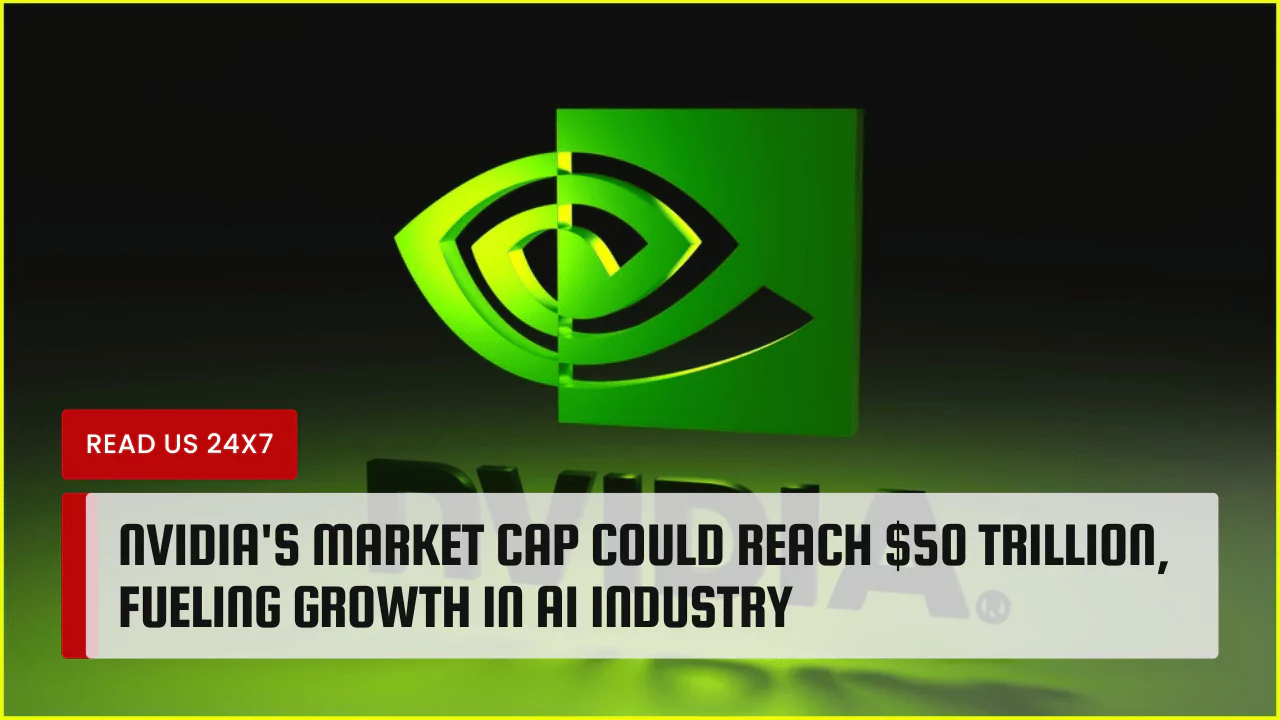James Anderson, a prominent tech investor, has predicted that Nvidia could reach a market cap of $50 trillion in a decade. This forecast, while optimistic, highlights the potential growth of the AI industry and Nvidia’s role in it.
Predicting Nvidia’s $50 Trillion Market Value in a Decade
Forecasting the $50 Trillion Valuation
Anderson predicts that Nvidia could become a leader in the AI industry, with data center AI chip demand growing at an annual rate of about 60%. If this growth trend persists, Nvidia’s earnings and free cash flow could see substantial increases, potentially resulting in a share price of $20,000 in 10 years. This would equate to a market capitalization of $49 trillion, assuming a 5% free cash flow yield. Anderson estimates the probability of this scenario occurring to be between 10% and 15%.
Comparing to the GDPs of the US and China
To put this forecast into perspective, the combined GDP of the world’s two largest economies, the US and China was approximately $47 trillion in 2021. If Nvidia were to reach a market cap of $50 trillion, it would surpass the combined GDPs of these two economic giants.
Insights from a Prominent Tech Investor
Anderson’s optimism about Nvidia’s future is based on the company’s technological advancements, expansion into new markets, and strategic partnerships. He believes that Nvidia’s “persistent exponential progress, competitive advantages in hardware and software, and culture and leadership” make it a strong candidate for extreme growth.
Drivers of Nvidia’s Projected Growth
Technological Advancements Fueling Growth
Nvidia’s growth is driven by its technological advancements in AI, data centers, and graphics processing units (GPUs). The company’s GPUs are used in a wide range of applications, from gaming to scientific research, and its AI capabilities are being used in industries such as healthcare, finance, and automotive.
Exploring New Market Territories
Nvidia is also expanding into new markets, such as robotics and autonomous vehicles. These markets have significant growth potential and Nvidia’s technology is well-positioned to capitalize on this growth.
Strategic Partnerships Impacting Growth
Nvidia’s strategic partnerships with companies such as Microsoft, Amazon, and Facebook are also driving its growth. These partnerships provide Nvidia with access to new markets and customers, and they help to solidify Nvidia’s position as a leader in the AI industry.
Nvidia’s Recent Market Performance
Analysis of Recent Stock Downgrades
Despite the optimistic forecasts, Nvidia’s stock has experienced some volatility. In recent months, several analysts have downgraded Nvidia’s stock, citing concerns about the company’s valuation and the broader market conditions.
Stock Market Volatility and Nvidia
Nvidia’s stock is sensitive to market volatility, as seen in the recent tech sell-off. However, the company’s strong fundamentals and growth potential make it a resilient player in the market.
Tech Leaders’ Reactions to Nvidia’s Performance
Tech leaders have expressed mixed reactions to Nvidia’s performance. Some, like Anderson, are optimistic about Nvidia’s future, while others are more cautious. For example, Terry Smith, a global fund manager, has chosen to avoid Nvidia due to concerns about its predictability.
In conclusion, Nvidia’s market cap could reach $50 trillion in a decade, driven by its technological advancements, expansion into new markets, and strategic partnerships. While there are challenges and uncertainties, Nvidia’s strong fundamentals and growth potential make it a compelling investment opportunity. The AI industry is still in its early stages, and Nvidia is well-positioned to lead this industrial revolution.



